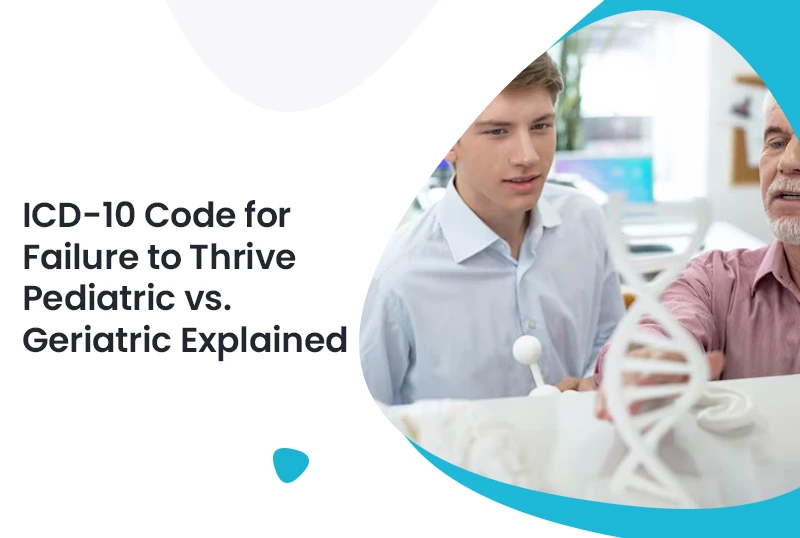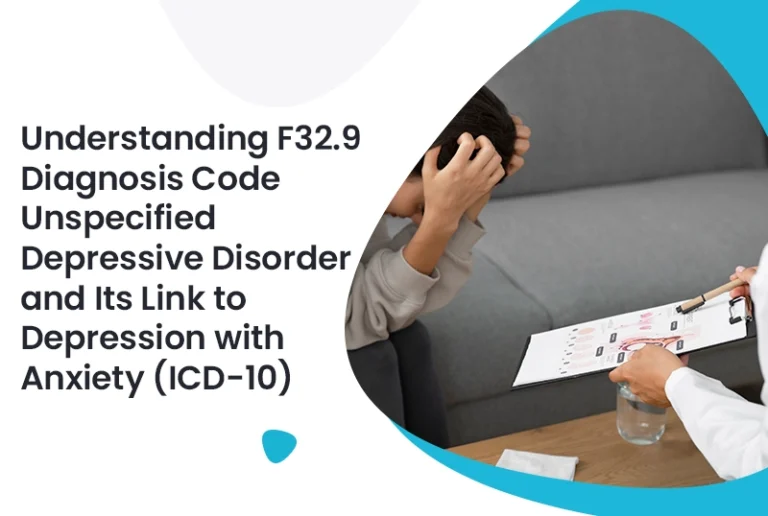Not all medical conditions arrive with clear-cut symptoms. Sometimes, it’s the quiet changes that raise concern. A child may fall behind on growth charts, or an older adult may become unusually withdrawn. These subtle shifts often point to a deeper issue that requires clinical evaluation—this is where understanding the ICD-10 Code for Failure to Thrive becomes crucial.
In the world of medical billing and coding, identifying and coding such complex presentations correctly is essential. It’s not just about reimbursement. It’s about connecting clinical care with the administrative processes that ensure patients receive the support they need.
What Does Failure to Thrive Mean in ICD-10?
Failure to thrive (FTT) isn’t a standalone disease, it signals an underlying problem affecting physical growth or health status. ICD-10 coding varies based on age and presentation. For children, it often reflects growth delays. In older adults, it typically indicates physical decline without an obvious cause.
Choosing the right ICD-10 code depends on age-specific symptoms and solid documentation. Getting it wrong can slow down claims and disrupt patient care. Getting it right keeps everything from diagnosis to reimbursement on track.
ICD-10 Code for Failure to Thrive: Pediatric
Picture an infant who hasn’t gained weight in months. The child avoids food, misses developmental milestones, and shows signs of delay. These are classic indicators of pediatric failure to thrive.
The ICD-10 code R62.51 applies here and should be backed by clinical notes that reference:
- Inconsistent weight gain
- Feeding patterns
- Growth percentiles below standard ranges
- Developmental concerns
The coding process must reflect detailed documentation from physicians. This allows the code to represent the child’s condition accurately and supports the claim if reviewed.
ICD-10 Code for Failure to Thrive: Geriatric
In older adults, failure to thrive often goes unnoticed. Over time, the person loses interest in eating, becomes isolated, and begins to physically weaken. This gradual decline can stem from chronic illnesses, depression, or poor living conditions.
You might consider the following ICD-10 codes:
- R64 – Cachexia, if the patient presents with severe wasting
- R63.4 – Abnormal weight loss, if the situation lacks a defined cause
Each option depends on what the provider documents. Symptoms like weight loss, fatigue, lack of appetite, and physical decline should be clearly outlined. This ensures the billing process is aligned with the medical record and supports healthcare revenue cycle management goals like accuracy and efficiency.
Key Differences Between Pediatric and Geriatric Cases
Although the phrase is the same, pediatric and geriatric failure to thrive have very different implications and coding rules.
| Feature | Pediatric (R62.51) | Geriatric (R64 / R63.4) |
| Common Triggers | Malnutrition, feeding issues, medical conditions | Chronic illness, social isolation, medication side effects |
| Evaluation Method | Growth charts, weight history | Functional assessments, nutritional logs |
| Documentation Focus | Growth percentiles, developmental delays | Weight changes, appetite, fatigue, activity level |
Avoid using a one-size-fits-all approach. Each patient requires a unique evaluation, and each coder must apply the correct ICD-10 designation.
Documentation Checklist to Prevent Claim Errors
Strong documentation builds the foundation for accurate coding. Here’s what providers and coders should focus on:
For pediatric cases:
- Detailed growth history
- Notes on feeding behavior and intake
- Developmental screening results
For geriatric cases:
- Documentation of weight loss
- Functional limitations and appetite decline
- Any medical or emotional conditions contributing to the decline
Do not rely on general phrases. Specificity in provider notes helps ensure the ICD-10 code chosen reflects the clinical situation.
Real-Life Examples for Clarity
Example 1: Pediatric
A 9-month-old boy weighs less than expected and hasn’t grown since his last visit. The pediatrician notes poor feeding and missed milestones.
Code used: R62.51
Example 2: Geriatric
An 82-year-old woman has lost 10 pounds over the past month. She shows reduced energy, eats less, and has no known chronic disease that explains the decline.
Code used: R63.4
These examples show that even when symptoms sound similar, the coding must reflect the patient’s age and clinical context.
Why Expert Help Makes a Difference
Failure to thrive is one of those gray areas in coding. If documentation is unclear or if the wrong ICD-10 is used, claims can be denied. That’s why working with an experienced medical billing company can save time and reduce billing stress.
An expert team can:
- Identify the correct code based on complete chart review
- Follow up on denied claims quickly and accurately
- Train staff on documentation tips that support coding best practices
- Integrate technology to flag incomplete entries and reduce rejection rates
A partnership like this helps practices stay compliant, efficient, and focused on care delivery.
Conclusion: Code With Care, Bill With Confidence
Failure to thrive is more than a medical phrase. It’s a complex situation that requires careful analysis, clear documentation, and accurate coding. Whether you’re identifying it in a growing child or a fading elder, using the right ICD-10 code matters.
Combine strong clinical notes with precise coding strategies. Then, support that process with the expertise of a reliable billing partner. That way, your patients receive the care they need, and your practice receives the reimbursement it deserves.
FAQs
What ICD-10 code is used for pediatric failure to thrive?
The correct code is R62.51. It applies when a child shows signs of poor growth, development, or nutrition.
What code applies to failure to thrive in elderly patients?
Commonly used codes are R64 for cachexia and R63.4 for unexplained weight loss. The choice depends on clinical presentation.
Can failure to thrive be used as a standalone diagnosis?
No. It usually indicates an underlying issue. Documentation should identify causes or contributing factors.
What if documentation is incomplete?
Coders should query providers or use the most specific available symptom code. Clear documentation supports reimbursement and reduces denials.
How can billing professionals help?
A specialized medical billing company can help choose correct codes, ensure documentation accuracy, and manage appeals for rejected claims.







